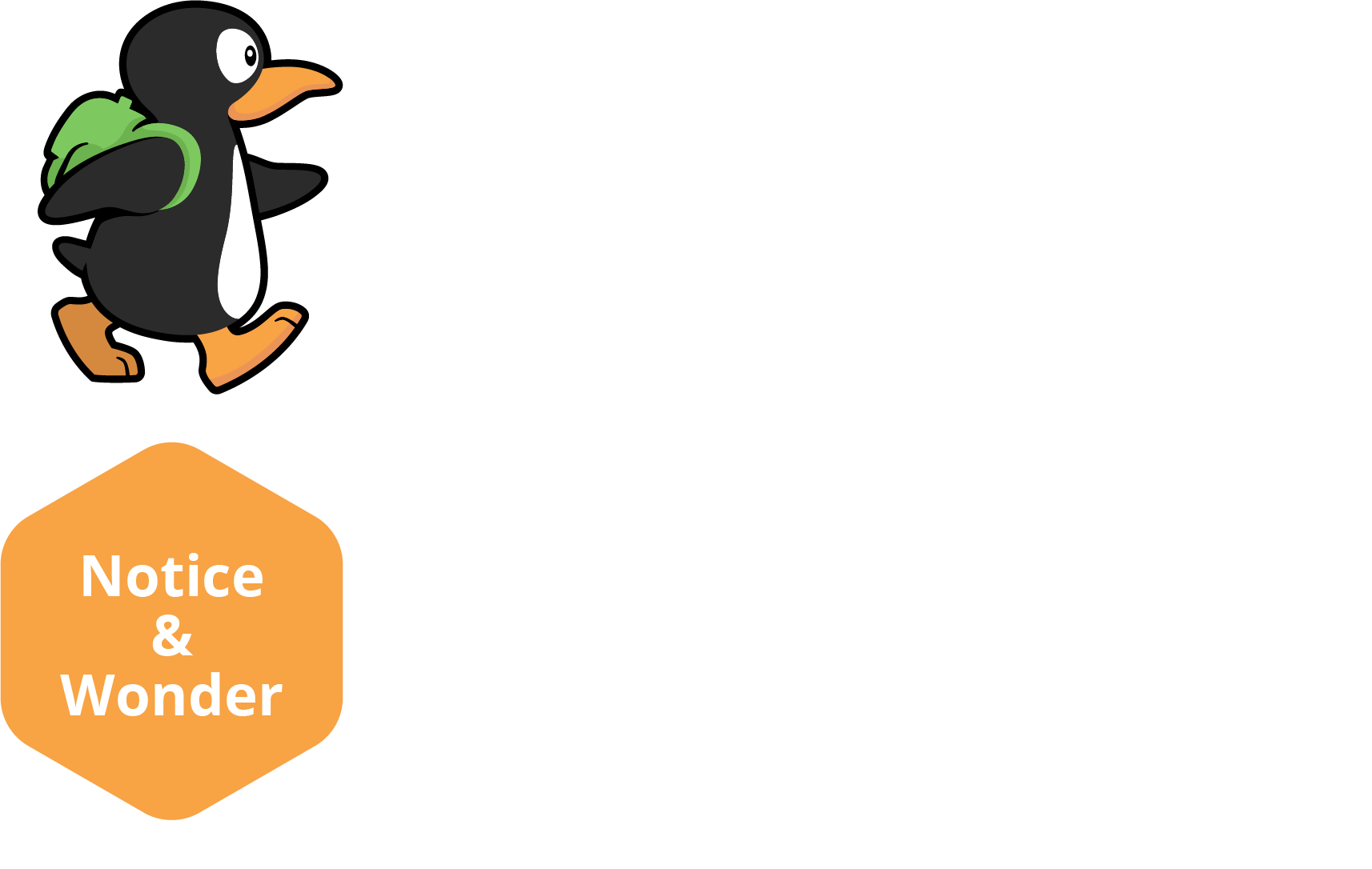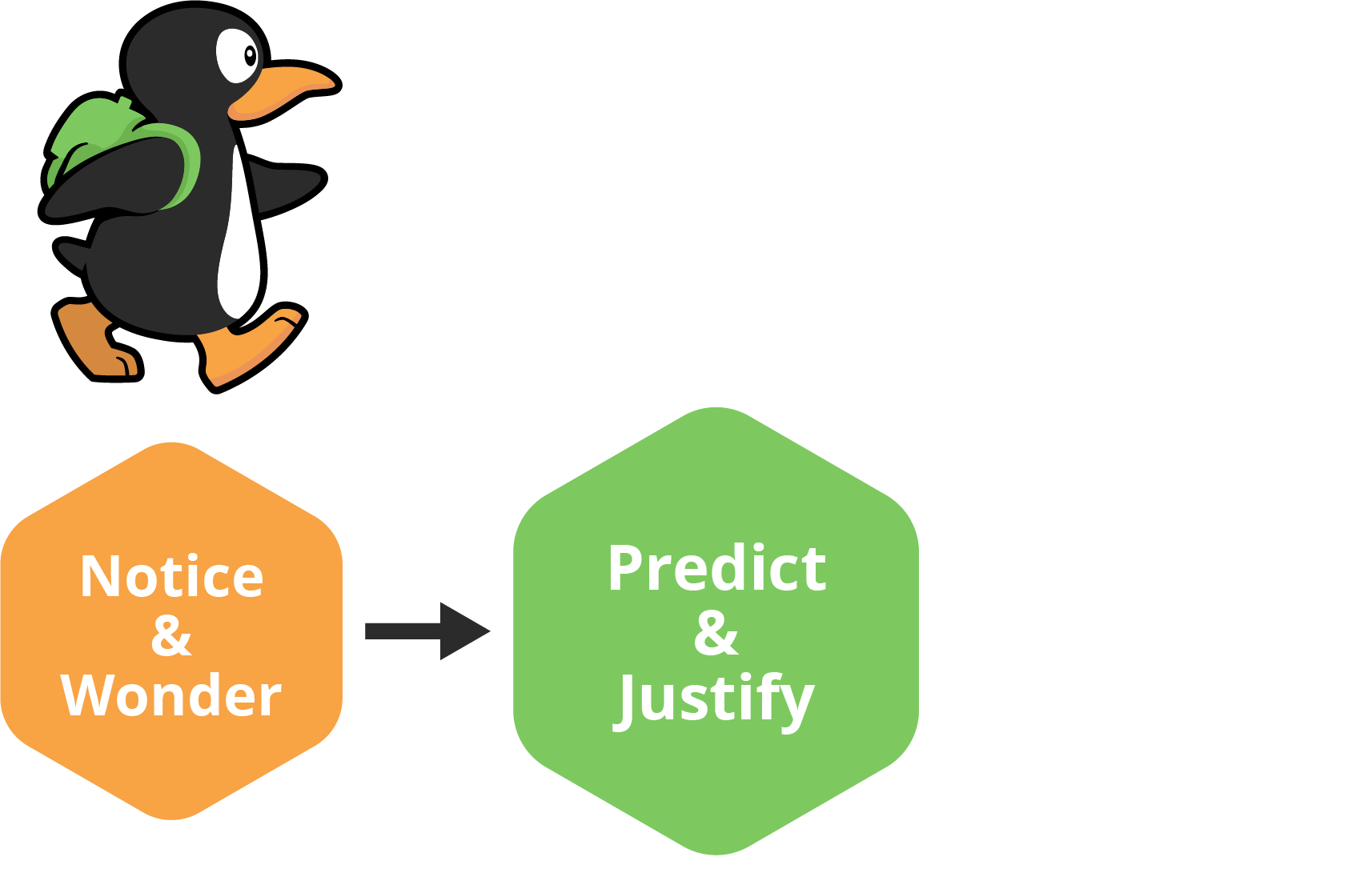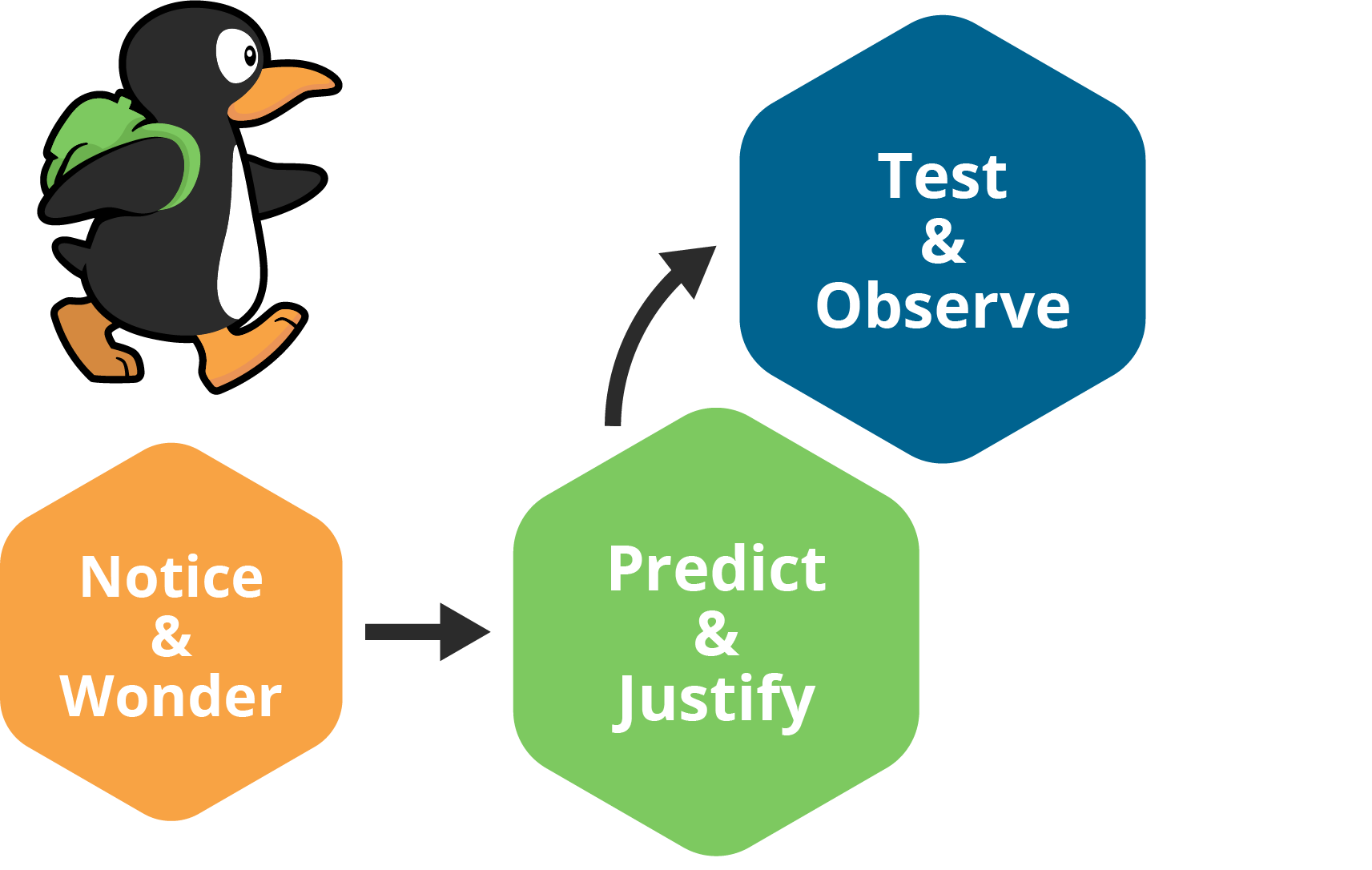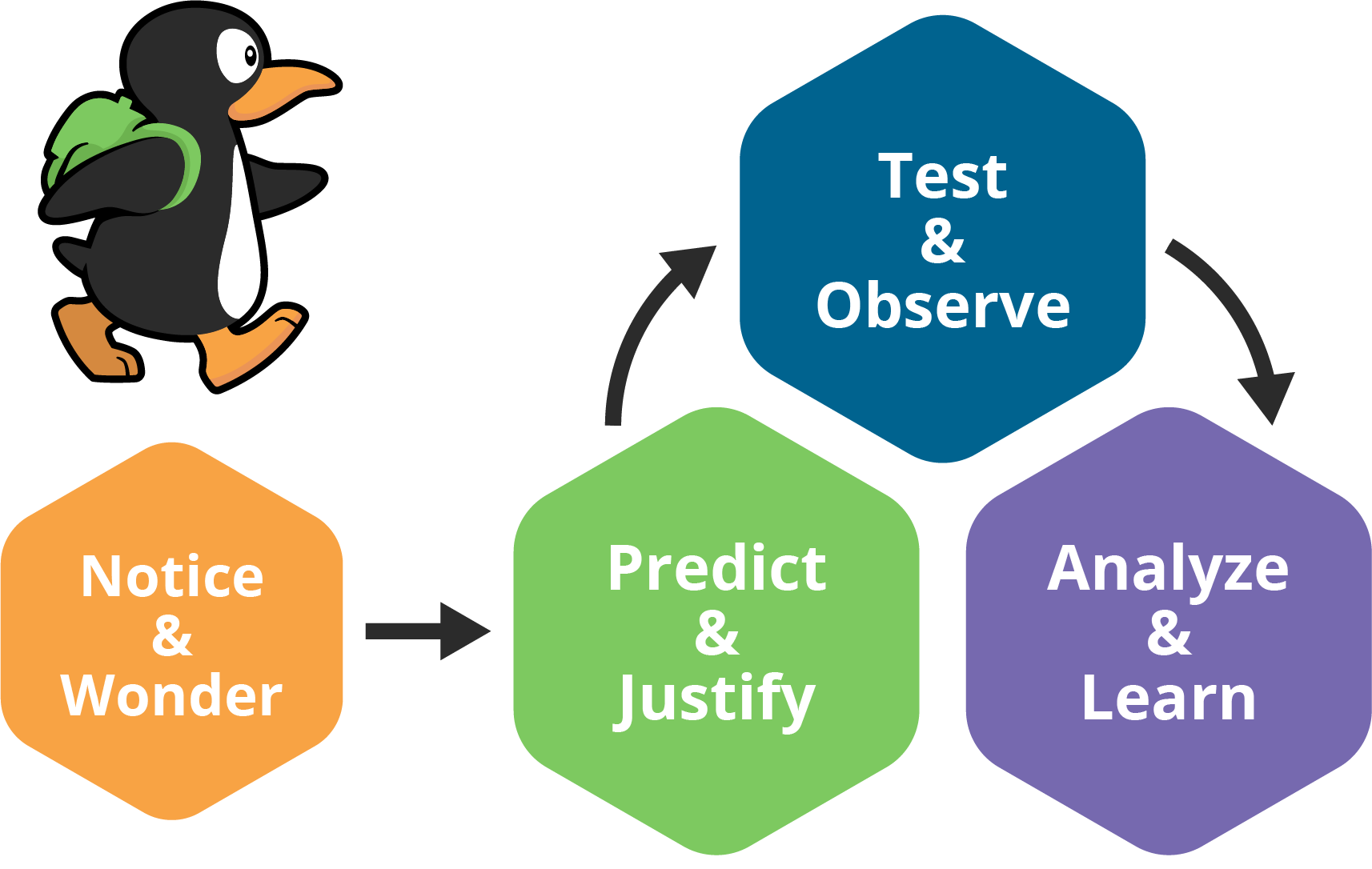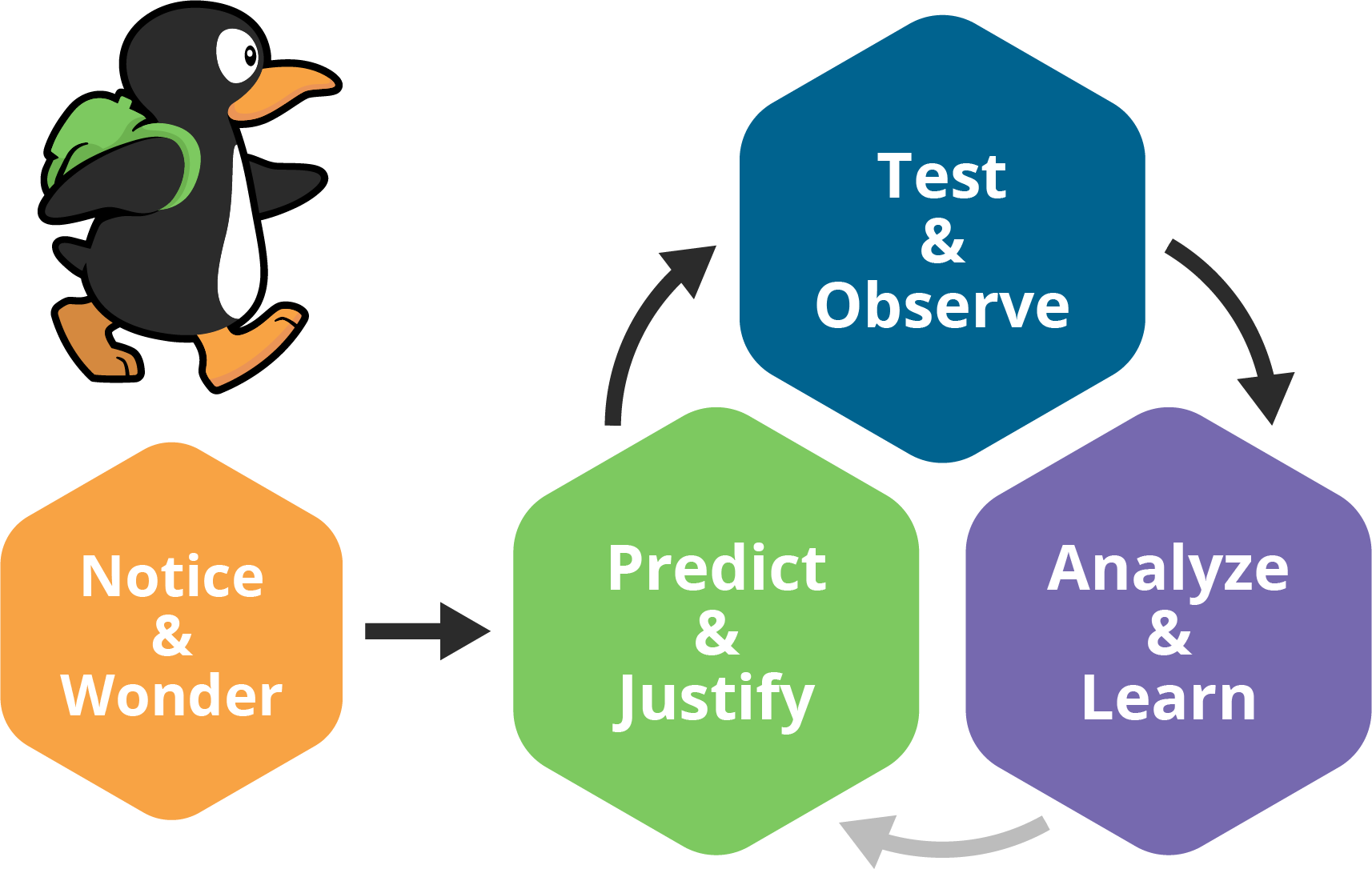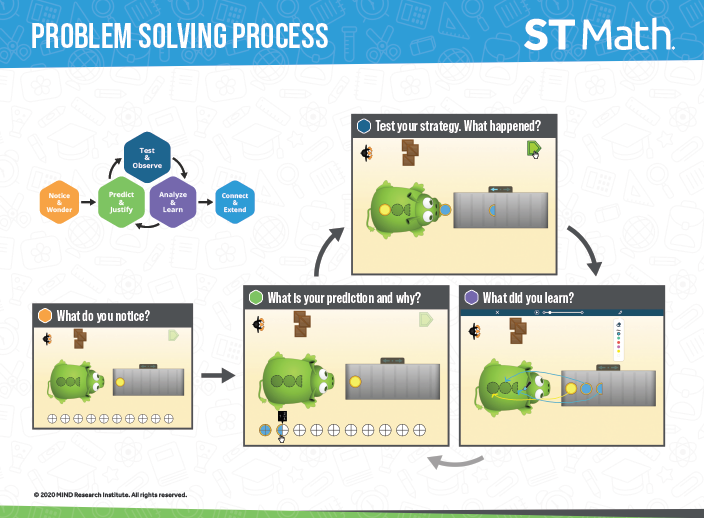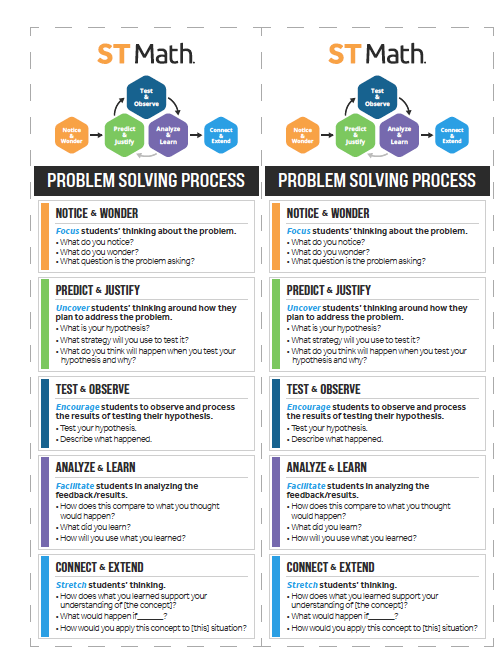The Problem Solving Process was developed to make the perception-action cycle (see The Science of ST Math) easier to bring into your classroom. The goal is to get students involved in the process of learning which requires noticing what is going on (in an ST Math puzzle, on the soccer field, or learning an instrument) and then starting a cycle of predicting, testing, and analyzing. When the learning is successful, it's connected to what is already known and extends knowledge.
Let's find out what it feels like!
Start playing the game below. It's a little harder than the ones you may have been playing so you can see how the process works on a game you have to think about. Play the game and open up a section at a time and answer the questions that are asked. Then close that one and open the next all while you're playing.
If you want to get the big picture first, open up all the steps and read through them but come back and play!
Resources
Resources include an English and Spanish introduction to the Problem Solving Process differentiated for grade. It's available here.

